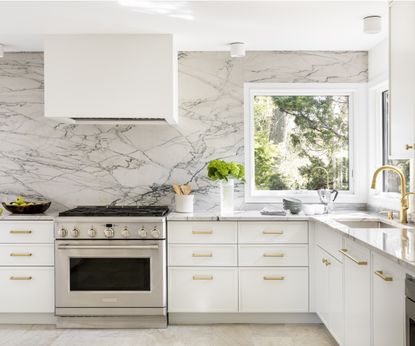Groovy Kitchens: 70s Retro Revival?
Groovy Kitchens: 70s Retro Revival?
The air crackles with a distinct energy. It's not just the scent of freshly brewed coffee and sizzling bacon; it's the palpable vibe of a bygone era, meticulously recreated. We're talking about the 70s retro kitchen revival, a trend that's less a fleeting fad and more a full-blown stylistic revolution. Forget minimalist sleekness; we're diving headfirst into a world of vibrant colors, bold patterns, and unapologetic personality.
A Time Warp to Sunshine and Avocado

Picture this: warm honey-toned wood, sunshine yellow cabinetry, and a healthy dose of avocado green appliances. This isn't your grandma's kitchen – though she might actually approve. The 70s kitchen aesthetic, at its heart, is about embracing a certain joyful exuberance. It's a space brimming with personality, a bold statement against the often sterile backdrop of modern design. It's a kitchen that whispers stories of disco nights, bell bottoms, and the optimistic spirit of a decade defined by change.
But before we jump into the swirling vortex of shag carpets and lava lamps (okay, maybe just the aesthetic inspiration), let's explore what makes a 70s retro kitchen so uniquely captivating.
The Key Ingredients of a Groovy 70s Kitchen

This isn't just about slapping a few avocado-colored accents onto existing cabinets. True 70s retro design requires a careful consideration of several elements:
1. Color Palette:
- Warm Neutrals: Think honey-toned woods, creamy off-whites, and earthy browns. These form the perfect backdrop for the bolder colors to pop.
- Bold Pops: Avocado green, burnt orange, harvest gold, mustard yellow – these are your power players. Don't be afraid to mix and match! A little bit of unexpected color goes a long way.
- Accent Colors: Consider incorporating deep blues, earthy terracotta, or even a touch of dusty rose for a sophisticated twist.

2. Materials and Textures:
- Wood: Solid wood cabinets are key. Think warm oak, rich walnut, or even a slightly distressed pine for a lived-in, vintage feel.
- Laminate: Don't dismiss laminate! 70s kitchens often featured bold patterned laminates, adding a unique textural element. Look for vintage options or modern interpretations of classic 70s patterns.
- Metal Accents: Brass, copper, and chrome are your friends. These metallic accents add shine and contrast to the warmer tones.
3. Cabinetry and Layout:

- Open Shelving: Open shelving is a signature feature of the 70s aesthetic, showcasing your favorite dishware and adding a sense of casual elegance.
- Built-in Features: Think about incorporating built-in seating or a breakfast nook to create a cozy and inviting space.
- Rounded Corners: Rounded cabinets and countertops were popular in 70s designs, softening the overall look.
4. Appliances and Fixtures:
- Avocado Green Appliances: The ultimate 70s statement piece. If finding vintage appliances proves difficult, consider painting existing appliances with a custom shade of avocado green.
- Vintage-Inspired Fixtures: Look for faucets and light fixtures with retro designs. Think brass finishes, geometric shapes, and subtle curves.
- Statement Lighting: A unique pendant light fixture can be a powerful way to add personality and style.

5. Flooring:
- Vinyl Flooring: This was extremely popular in the 70s, and you can find modern options with retro patterns and colors.
- Tile: Consider patterned tile in warm tones, or even a terrazzo finish for an authentic vintage feel.
Bringing the Groovy Vibes to Life: A Step-by-Step Guide

Reviving your kitchen with 70s retro style doesn't require a complete overhaul. Start small, and build from there.
Step 1: Inspiration Board: Create a Pinterest board to collect images of 70s kitchens that you love. This will help you define your style and narrow down your choices.
Step 2: Color Palette Selection: Choose your dominant and accent colors. Test paint swatches on your walls and cabinets to see how they interact with natural light.
Step 3: Focus on One Area: Start with one area of your kitchen, such as the backsplash or the countertop, to make a gradual transition without feeling overwhelmed.
Step 4: Source Materials and Appliances: Vintage shops, flea markets, and online marketplaces are excellent places to find retro appliances and accessories.
Step 5: Mix and Match: Don't be afraid to experiment. The beauty of 70s retro style is its eclectic nature. Mixing patterns and textures can create a truly unique space.
Step 6: Accessorize: Add finishing touches such as retro-inspired dishware, curtains, and artwork to complete the look.
Beyond the Aesthetics: The Heart of 70s Design
The 70s retro aesthetic isn’t just about surface-level styling; it’s about a mindset. It’s about embracing individuality, celebrating bold choices, and creating a space that feels genuinely you. It’s about a return to craftsmanship, to quality materials, and to a sense of timeless style that transcends fleeting trends.

Think about incorporating these elements:
- Personal Touches: Display family photos, vintage cookbooks, or other items that tell your story.
- Natural Elements: Add plants to bring life and vibrancy to your space.
- Functional Design: Ensure your kitchen is both stylish and practical. Consider the layout and flow of your space to maximize efficiency.
A Lasting Legacy of Style
The 70s retro kitchen revival is more than just a nostalgic trend; it's a celebration of a distinct design aesthetic that continues to inspire. It's a reminder that style is subjective, that personality shines through in the details, and that a little bit of groovy never hurts. So, embrace the bold colors, the warm textures, and the unique character of this era. Your kitchen awaits its retro makeover. Are you ready to get groovy?
